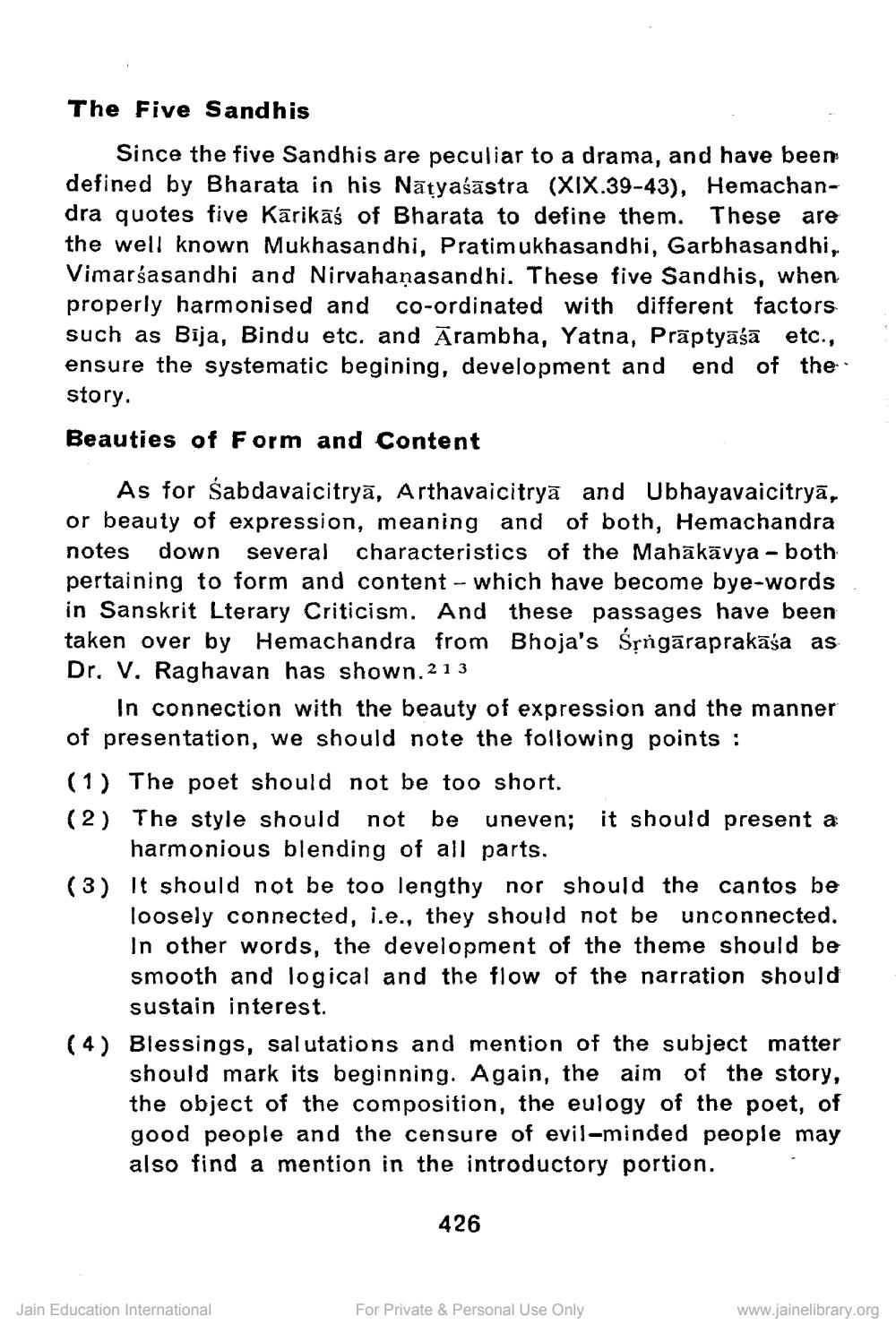________________
The Five Sandhis
Since the five Sandhis are peculiar to a drama, and have been defined by Bharata in his Natyaśästra (XIX.39-43), Hemachandra quotes five Karikas of Bharata to define them. These are the well known Mukhasandhi, Pratimukhasandhi, Garbhasandhi, Vimarśasandhi and Nirvahanasandhi. These five Sandhis, when properly harmonised and co-ordinated with different factors such as Bija, Bindu etc. and Arambha, Yatna, Praptyāśā etc., ensure the systematic begining, development and end of the story.
Beauties of Form and Content
As for Sabdavaicitrya, Arthavaicitrya and Ubhayavaicitryā, or beauty of expression, meaning and of both, Hemachandra notes down several characteristics of the Mahākāvya - both pertaining to form and content - which have become bye-words in Sanskrit Lterary Criticism. And these passages have been taken over by Hemachandra from Bhoja's Śṛngaraprakāśa as Dr. V. Raghavan has shown.213
In connection with the beauty of expression and the manner of presentation, we should note the following points :
(1) The poet should not be too short.
(2) The style should not be harmonious blending of all parts.
(3) It should not be too lengthy nor should the cantos be loosely connected, i.e., they should not be unconnected. In other words, the development of the theme should be smooth and logical and the flow of the narration should sustain interest.
uneven; it should present a
(4) Blessings, salutations and mention of the subject matter should mark its beginning. Again, the aim of the story, the object of the composition, the eulogy of the poet, of good people and the censure of evil-minded people may also find a mention in the introductory portion.
Jain Education International
426
For Private & Personal Use Only
www.jainelibrary.org




